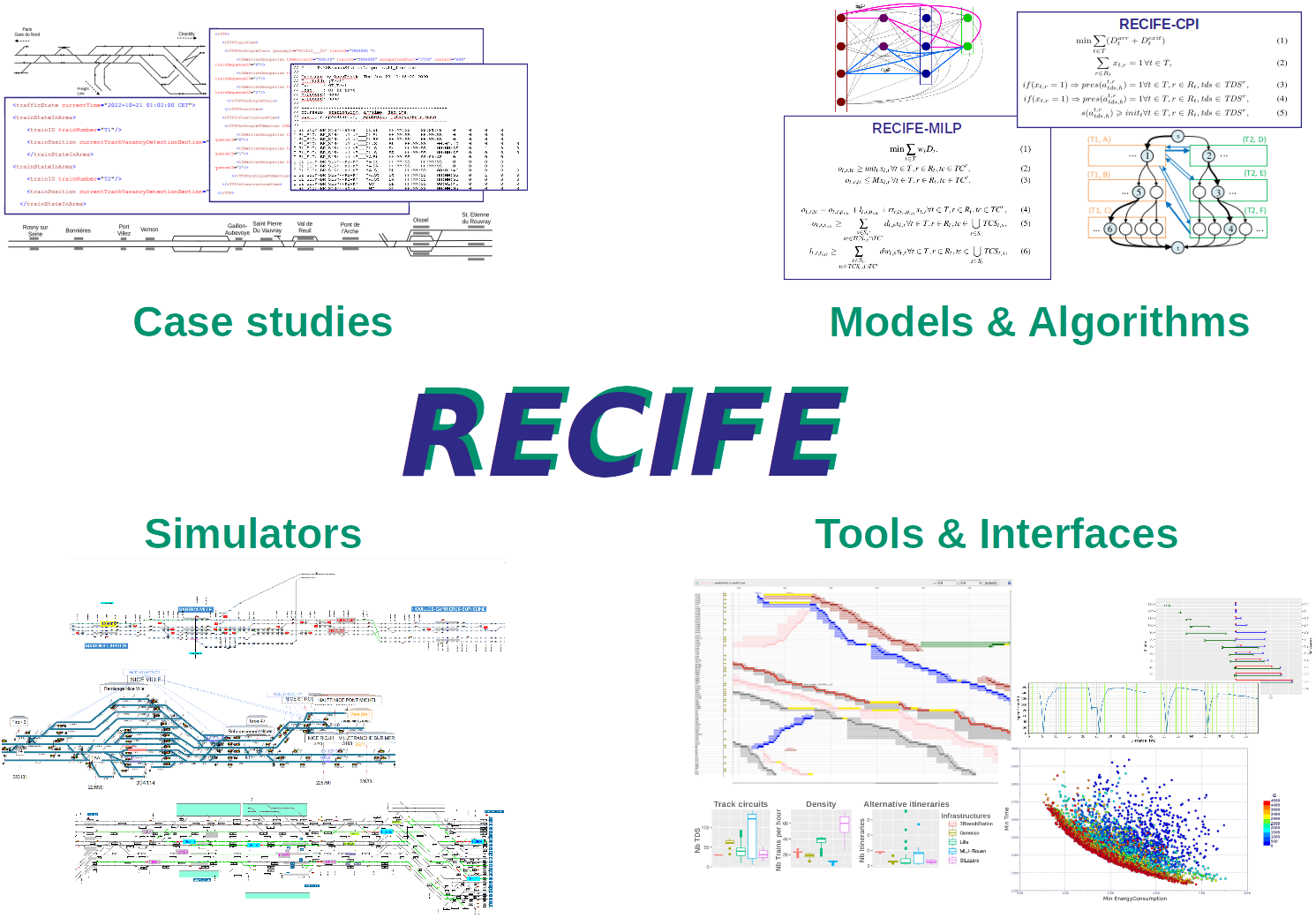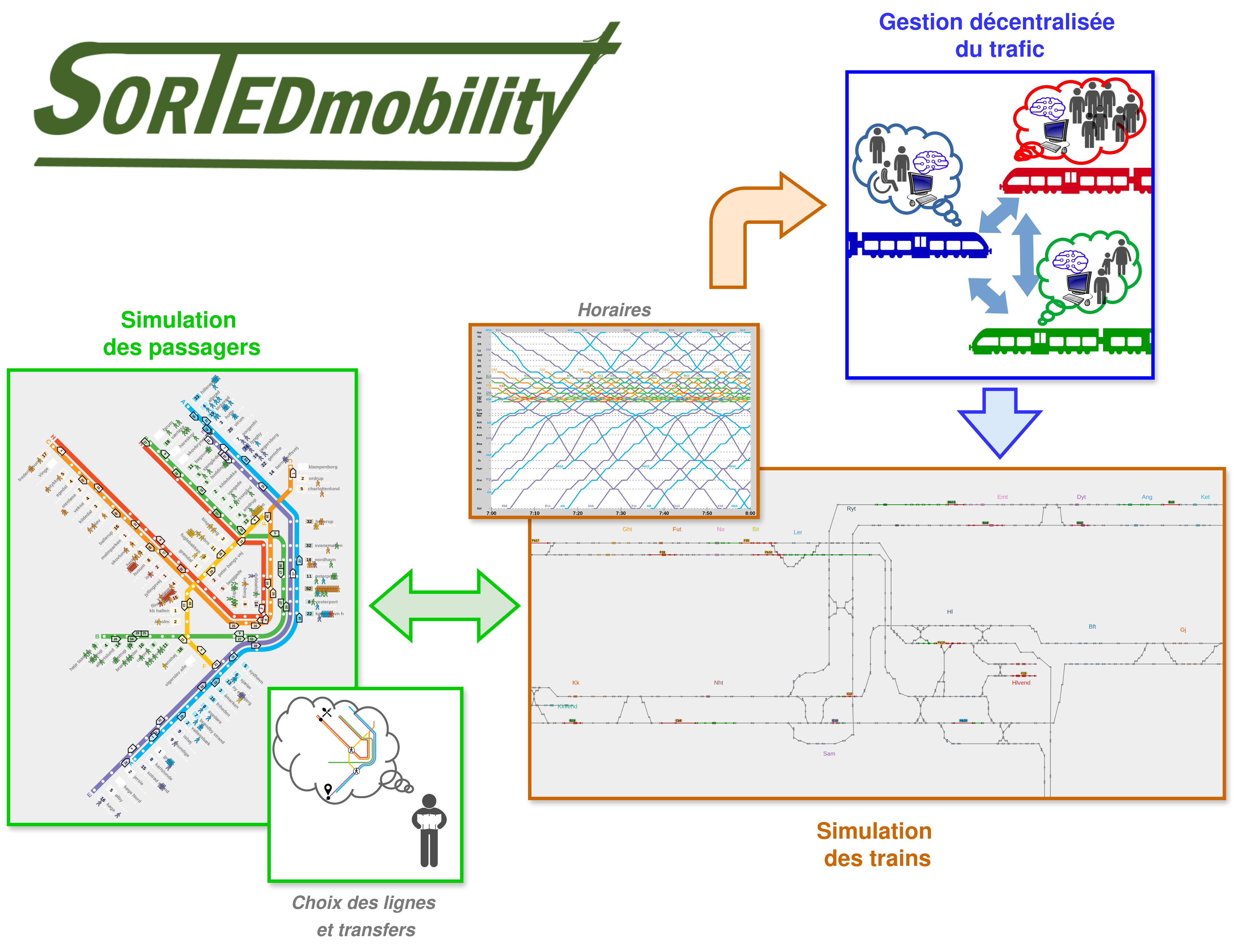RECIFE Platform for Research on Rail Traffic Management
The RECIFE (REsearch on Railway Infrastructure CapaCity) software platform supports algorithm design and experimentation for railway traffic management.

This platform encompasses multiple components and structures their interconnection:
Models and algorithms: approached based on operations research and artificial intelligence techniques. They are designed, developed, and tested within research studies and internal or collaborative research projects. They make decisions (for example, priorities between trains, routes to take, station stop times, ...) to optimize the railway system performance. Examples of algorithms developed within the platform are:
Recife-MILP: operational railway traffic management algorithm (train routing and scheduling), using mixed-integer linear programming.
Recife-CPI: operational railway traffic management algorithm (train routing and scheduling), using constraint programming and scheduling theory.
Recife-MAINT: algorithm derived from RECIFE-MILP enabling train re-planning in case of track maintenance works.
Recife-SAT: railway network saturation algorithm, using mixed-integer linear programming.
ACO-rtTRSP: algorithm for pre-selecting subset of alternative train routes to use in operational traffic management, based on the Ant Colony Optimization metaheuristic
ACO-rtECMP: algorithm for defining train driving profiles during operational traffic management, based on the Ant Colony Optimization metaheuristic.
Databases: data on case studies, including information on infrastructure, timetables, disturbances, and rolling stock, which enable realistic modeling and simulations. This data is organized in a common and documented format.
Simulators: these software tools developed by industrial companies or academic partners reproduce railway traffic behavior, taking into account decisions made by the algorithms. Here are some examples of simulators used for experimentation:
A module designed and developed by the traffic management team of the ESTAS laboratory allows coupling these software tools to the microscopic simulation of passengers. Through this coupling, passenger boardings and alightings can tracked, enabling the analysis of their trip within the network, the evaluation of people’s waiting and travel times, and the consistency between passenger flows and train stop times at stations.
Tools and interfaces: software tools designed and developed primarily by the traffic management team of the ESTAS laboratory, enabling visualization and analysis of experimentation results, to understand behaviors and evaluate algorithm performance.

The RECIFE platform is modular and evolving, which allows us to meet the specific needs of studies and projects. For more information:
Contact: Grégory Marlière